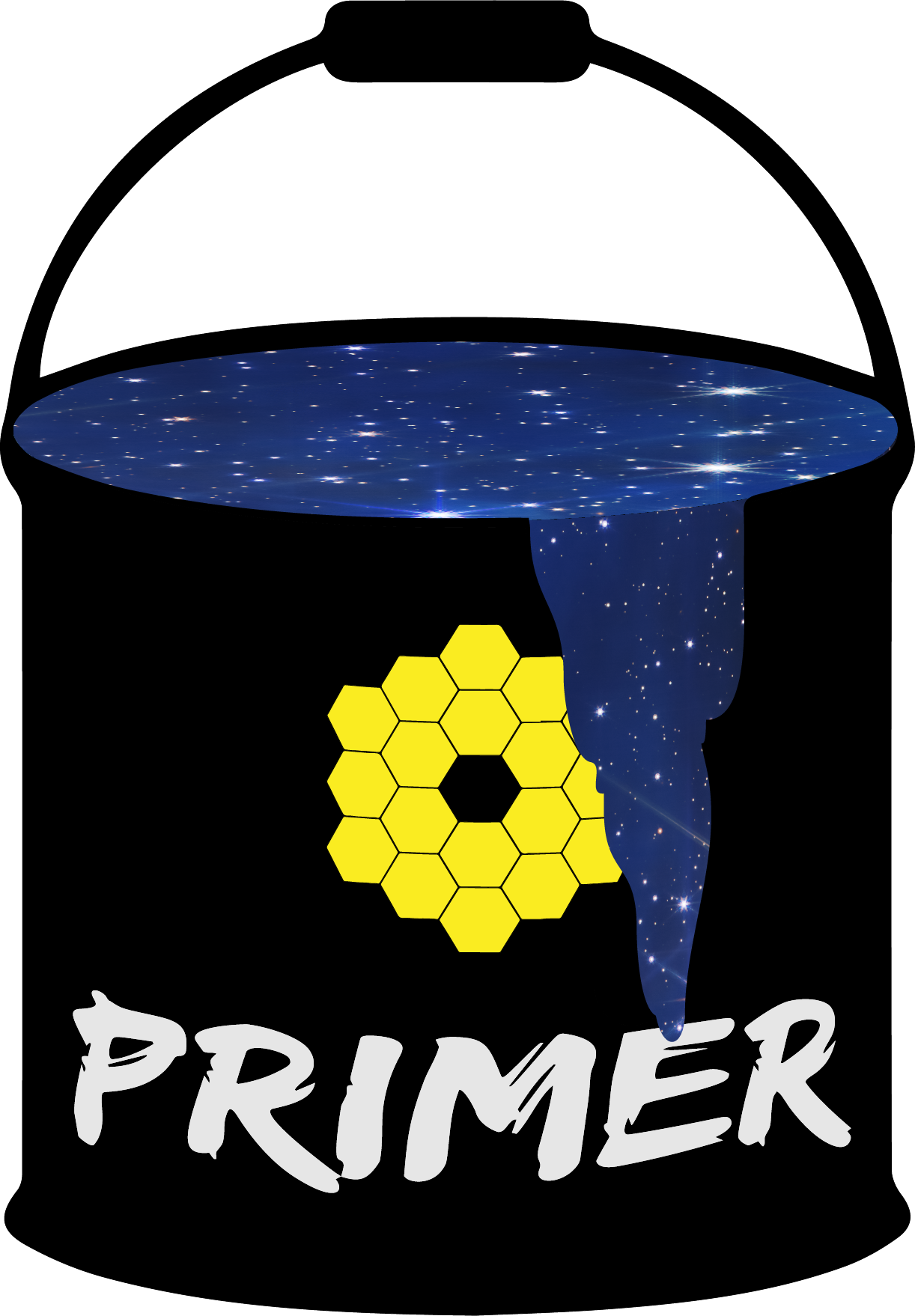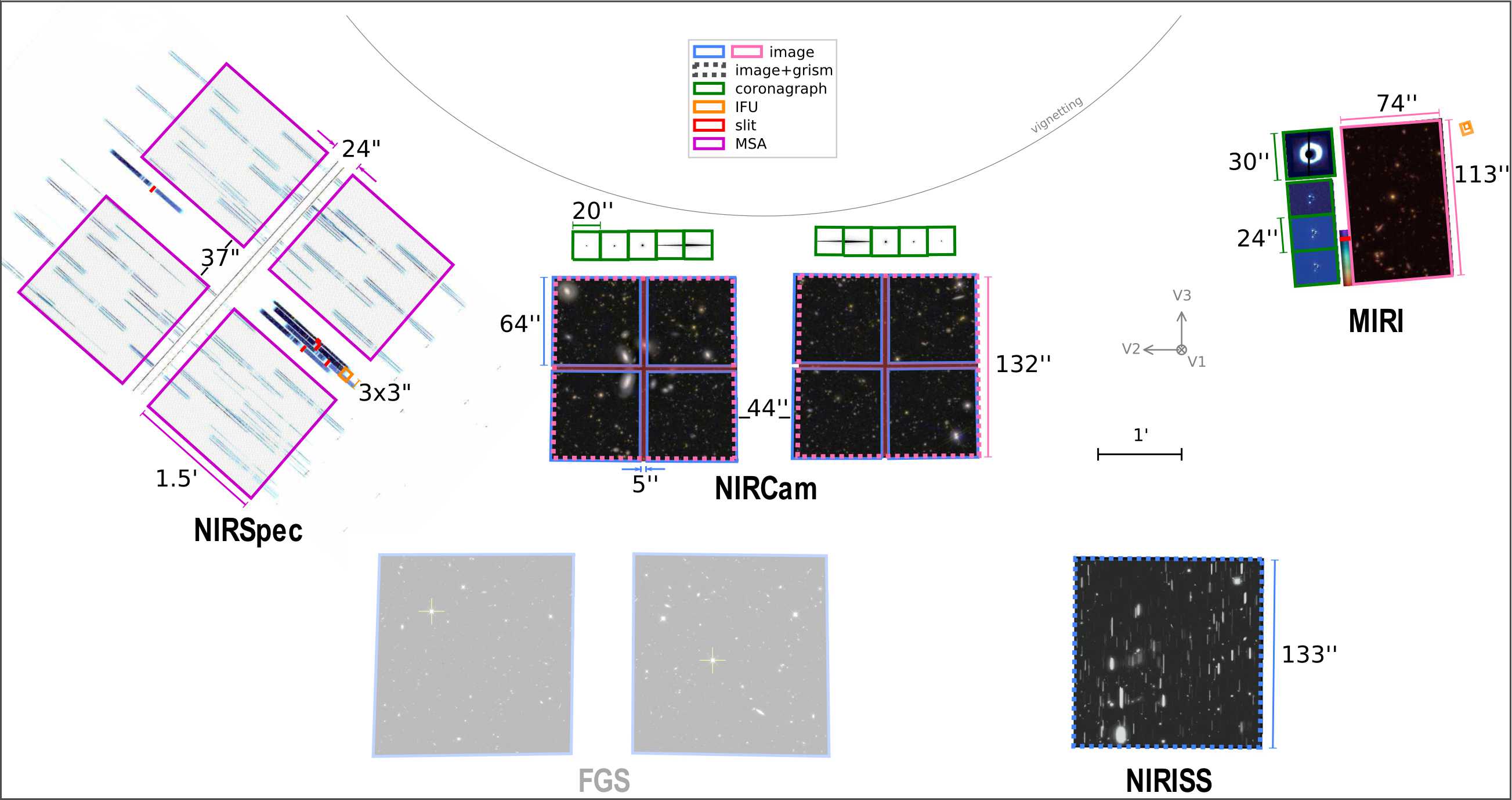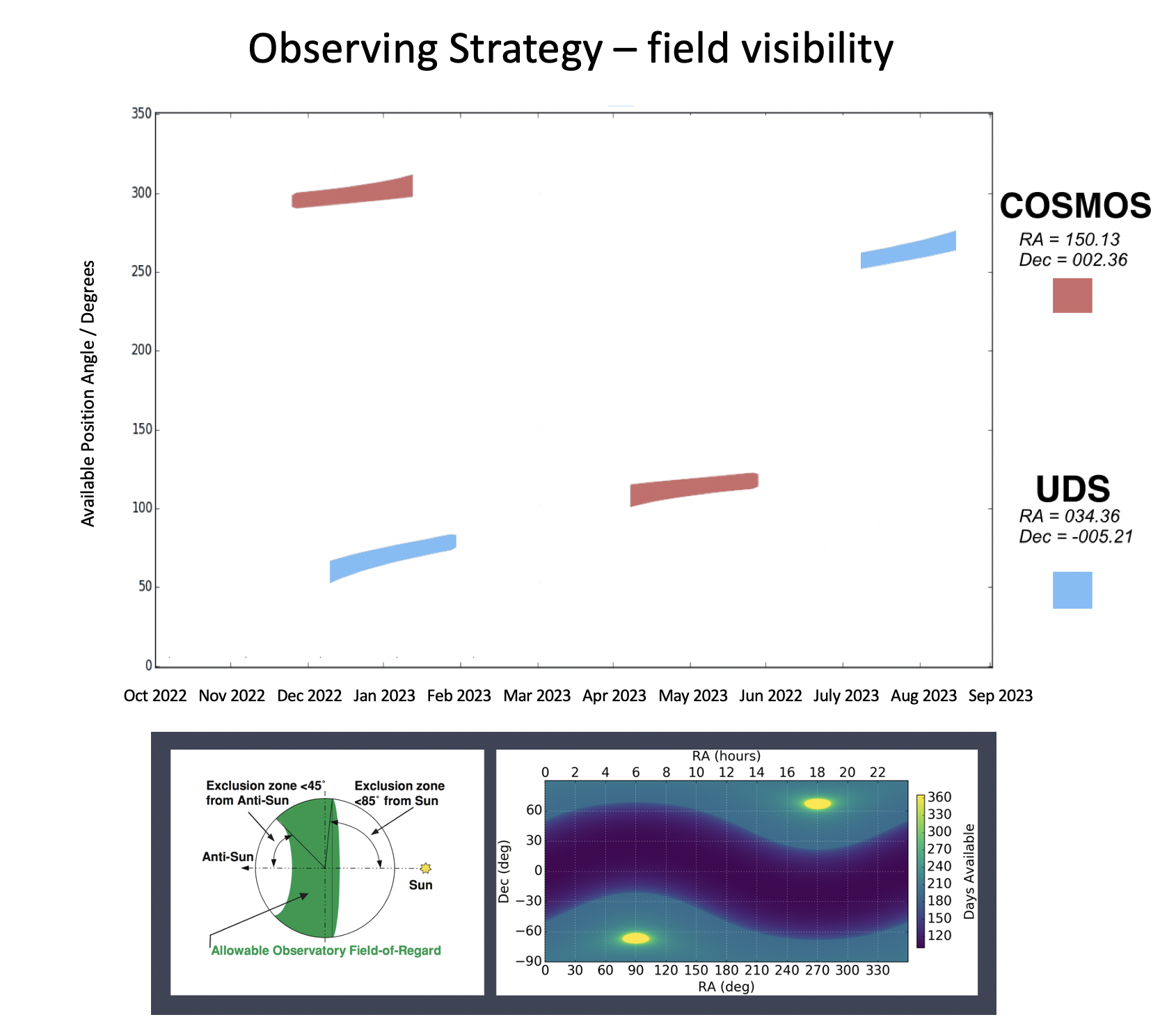The JWST observations for PRIMER
 PRIMER will target the COSMOS and UDS fields.
These key equatorial fields have deep HST imaging from the CANDELS survey plus a wealth of other data.
PRIMER will obtain deep JWST imaging in 10 bands:
F090W, F115W, F150W, F200W, F277W, F356W, F444W and F410M with NIRCam, and
F770W and F1800W with MIRI.
The layout of the PRIMER observations is shown in the first figure below.
The second figure shows the JWST focal plane.
PRIMER simultaneously uses NIRCam to image one part of the field and MIRI to image another part.
After half a year the field is observed again, now with JWST rotated 180 degrees (see the third figure), and this allows the same part of the sky to get both NIRCam and MIRI imaging.
Additionally, NIRCam observes its field in two filters simultaneously, as the light is split into NIRCAM's short wavelength channel (0.6−2.3 µm) and long wavelength channel (2.4−5.0 µm).
PRIMER will target the COSMOS and UDS fields.
These key equatorial fields have deep HST imaging from the CANDELS survey plus a wealth of other data.
PRIMER will obtain deep JWST imaging in 10 bands:
F090W, F115W, F150W, F200W, F277W, F356W, F444W and F410M with NIRCam, and
F770W and F1800W with MIRI.
The layout of the PRIMER observations is shown in the first figure below.
The second figure shows the JWST focal plane.
PRIMER simultaneously uses NIRCam to image one part of the field and MIRI to image another part.
After half a year the field is observed again, now with JWST rotated 180 degrees (see the third figure), and this allows the same part of the sky to get both NIRCam and MIRI imaging.
Additionally, NIRCam observes its field in two filters simultaneously, as the light is split into NIRCAM's short wavelength channel (0.6−2.3 µm) and long wavelength channel (2.4−5.0 µm).
See also the figures on the page about the Science. The official program information for PRIMER (GO 1837), including the APT file, is available from STScI.


